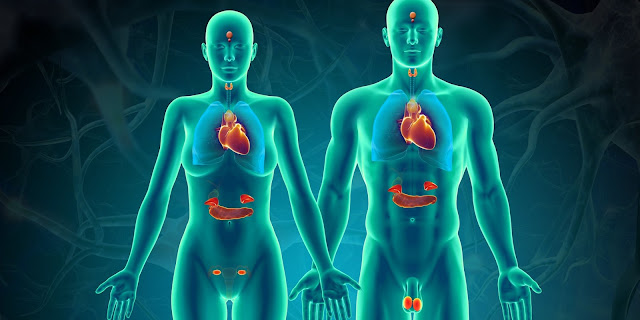Disinfectant Sprayers: Effective Cleaning Tools to Help Combat Germs and Viruses
 |
| Disinfectant Sprayers |
Bactericide
sprayers have become increasingly popular cleaning tools in both commercial and
residential settings. As germs and viruses continue to spread, having an
efficient way to disinfect high-touch surfaces is more important than ever. Bactericide
sprayers offer a convenient method for applying cleaning agents without having
to wipe surfaces by hand. Various types of sprayers exist to meet different
disinfection needs.
Types of Disinfectant Sprayers
Two major categories of Bactericide
Sprayers are manual sprayers and electric sprayers. Manual sprayers are
hand-powered using a pump mechanism. They are inexpensive, lightweight, and
portable making them ideal for spot cleaning or treating small areas. Electric
sprayers are battery-powered for continuous spraying without pumping. They have
larger tanks than manual sprayers, allowing for treatment of more extensive
surfaces without refilling. Within these categories are specific product types:
- Trigger sprayers are the most basic manual type. Squeezing a trigger
activates pumping action to spray liquid in a narrow mist. They are best for
countertops, doorknobs, and other small areas.
- Pump sprayers are similar but have a pump mechanism that is primed before
each use for a continuous spray. They can cover larger zones than trigger
sprayers.
- Backpack sprayers fit onto the back like a hydration pack with long hose and
nozzle for spraying disinfectant on wide floors and other expansive surfaces.
- Electric misters/foggers use an electrical fan to very finely atomize cleaning
agents into a mist or fog that fills entire rooms. They are suited for
whole-room or large-space disinfection.
Advantages of Using Bactericide sprayers
There are several important benefits to using bactericide sprayers rather than
cloths/wipes for surface cleaning and pathogen removal. Sprayers help promote
more efficient and effective disinfection in the following ways:
- Contact time of disinfectants on surfaces is increased. With spray
application, the liquid rests on areas longer to destroy microbes rather than
being immediately wiped away. This allows for thorough elimination of germs.
- Complete coverage of all surfaces is easier to achieve with an even mist
compared to manual wiping which can miss cracks and crevices. Spraying ensures
disinfectants access all areas.
- Less product is needed versus saturating cloths. Sprayers apply a fine layer
of cleaning solution economically. Excess liquid also does not pool or drip off
surfaces.
- Risk of cross-contamination is reduced. Spray application avoids potential
transfer of germs from dirty cloths or hands to cleaned surfaces that can occur
with wiping.
- Ergonomically, spraying is less strenuous than repetitive wiping
motions—especially beneficial for large-scale cleaning tasks. Trigger fingers
and arm fatigue are prevented.
Proper Use and Maintenance of Bactericide
sprayers
To get the most effective disinfection from sprayer use, some key best
practices should be followed for application and equipment care:
- Select an appropriate EPA-registered disinfectant solution for the targeted
pathogens and dilute precisely per label instructions. More concentrated
solutions do not equal better cleaning.
- Before spraying, move or cover any items that could be damaged by moisture.
Wipe up excess liquid afterwards on surfaces where disinfectant sitting could
be undesirable.
- For electric sprayers, fully charge batteries as needed and check for
clogs/debris daily to ensure proper aerosolization.
- Rinse manual sprayer parts and tanks thoroughly with warm, soapy water after
each use. Store in an open position to dry completely and prevent mold growth.
- Replace worn gaskets, seals, and hoses as needed to maintain an airtight pump
mechanism. Leaking equipment wastes product and reduces effectiveness.
- Calibrate spray patterns occasionally to confirm an even mist is still being
produced without drips/streams. Adjust nozzle settings if patterns appear
uneven.
- Sanitize surfaces of electric sprayers themselves periodically with
disinfecting wipes to kill any germs that may have collected on exterior
materials.
Proper usage and care helps bactericide sprayers maintain maximum efficiency,
productivity, and germ-eliminating capabilities over an extended service
lifetime. With economical operation and ease of thorough surface treatment,
these tools are invaluable for supporting enhanced cleaning regimens.
Applications for Bactericide sprayers
Versatile bactericide sprayers are widely applicable in both commercial and
domestic settings for a variety of disinfection needs:
Healthcare Facilities
- Nurses stations, exam rooms, waiting areas.
- Stretchers, bed rails, medical equipment.
- Phones, cabinets, counters.
Schools/Daycares
- Desks, chairs, door handles.
- Play structures, toys, equipment.
- Bathrooms, classrooms, hallways.
Gyms/Sports Facilities
- Weight machines, cardio devices.
- Benches, lockers, showers.
- Equipment, mats, balls.
Office Buildings
- Phones, keyboards, mice.
- Copiers, breakrooms, conference rooms.
- Doorknobs, light switches.
Retail Stores
- Checkout counters, hand baskets.
- Dressing rooms, shelves, displays.
- Pins, clothes, mirrors.
Homes
- Commonly touched surfaces.
- Bathrooms, kitchens, doorknobs.
- Appliance handles, light switches.
Hotels/Hospitality
- Guest rooms, lobbies, hallways.
- Fitness rooms, pools, lounges.
- Remote controls, phones, luggage carts.
Restaurants/Bars
- Tables, chairs, menus.
- Deal trays, POS terminals, soda fountains.
- Kitchen equipment, serving areas.
In Summary, the versatile functionality of bactericide sprayers allows them to
play an indispensable role wherever enhanced sanitation and germ prevention is
needed. Whether targeting large institutions or domestic settings, sprayers
streamline routine surface disinfection.
Get
more insights on Disinfectant
Sprayers
About
Author:
Money
Singh is a seasoned
content writer with over four years of experience in the market research
sector. Her expertise spans various industries, including food and beverages, biotechnology,
chemical and materials, defense and aerospace, consumer goods, etc.



Comments
Post a Comment